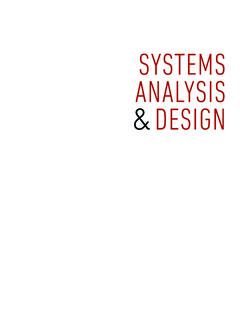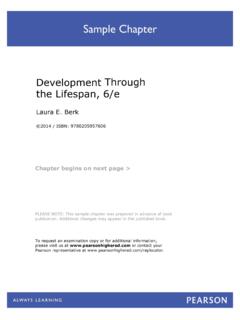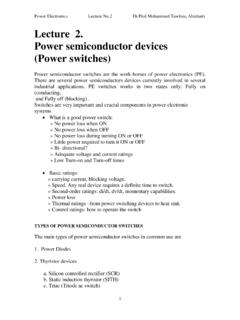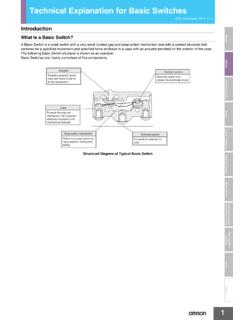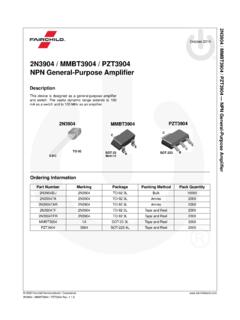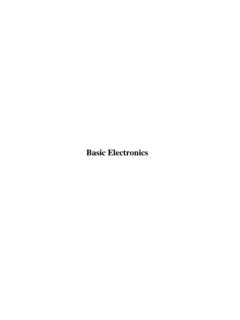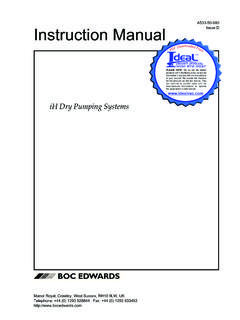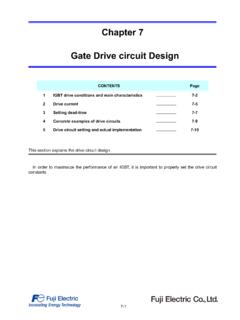Transcription of Power Semiconductor Devices - Pearson
1 1 CHAPTER1 Power Semiconductor INTRODUCTIONP ower Semiconductor Devices constitute the heart of modern Power electronic are used in Power electronic converters in the form of a matrix of on-off switches, and helpto convert Power from ac-to-dc (rectifier), dc-to-dc (chopper), dc-to-ac (inverter), and ac-to-ac atthe same (ac controller) or different frequencies (cycloconverter). The switching mode powerconversion gives high efficiency, but the disadvantage is that due to the nonlinearity of switches,harmonics are generated at both the supply and load sides. The switches are not ideal, and theyhave conduction and turn-on and turn-off switching losses.
2 Converters are widely used in appli-cations such as heating and lighting controls, ac and dc Power supplies, electrochemical pro-cesses, dc and ac motor drives, static VAR generation, active harmonic filtering, etc. Althoughthe cost of Power Semiconductor Devices in Power electronic equipment may hardly exceed20 30 percent, the total equipment cost and performance may be highly influenced by the char-acteristics of the Devices . An engineer designing equipment must understand the Devices andtheir characteristics thoroughly in order to design efficient, reliable, and cost-effective systemswith optimum performance.
3 It is interesting to note that the modern technology evolution inpower electronics has generally followed the evolution of Power Semiconductor Devices . Theadvancement of microelectronics has greatly contributed to the knowledge of Power devicematerials, processing, fabrication, packaging, modeling, and s Power Semiconductor Devices are almost exclusively based on silicon material andcan be classified as follows: Diode Thyristor or silicon-controlled rectifier (SCR) Page 1 Friday, September 7, 2001 2:10 PM2 Chapter 1 Power Semiconductor Devices Gate turn-off thyristor (GTO) Bipolar junction transistor (BJT or BPT) Power MOSFET Static induction transistor (SIT) Insulated gate bipolar transistor (IGBT) MOS-controlled thyristor (MCT) Integrated gate-commutated thyristor (IGCT)In this chapter, we will briefly study the operational principles and characteristics of DIODESP ower diodes provide uncontrolled rectification of Power and are used in applications suchas electroplating, anodizing, battery charging, welding, Power supplies (dc and ac), and variable-frequency drives.
4 They are also used in feedback and the freewheeling functions of convertersand snubbers. A typical Power diode has P-I-N structure, that is, it is a P-N junction with a near-intrinsic Semiconductor layer (I-layer) in the middle to sustain reverse shows the diode symbol and its volt-ampere characteristics. In the forward-biased condition, the diode can be represented by a junction offset drop and a series-equivalentresistance that gives a positive slope in the V-I characteristics. The typical forward conductiondrop is V. This drop will cause conduction loss, and the device must be cooled by theappropriate heat sink to limit the junction temperature.
5 In the reverse-biased condition, a smallFigure symbol and volt-ampere Page 2 Friday, September 7, 2001 2:10 PMDiodes3leakage current flows due to minority carriers, which gradually increase with voltage. If thereverse voltage exceeds a threshold value, called the breakdown voltage, the device goes throughavalanche breakdown, which is when reverse current becomes large and the diode is destroyedby heating due to large Power dissipation in the turn-off voltage and current characteristics as functions of time, which are indicated inFigure , are particularly important for a diode. In the forward high-conduction region, theconduction drop (VF) is small, as mentioned before.
6 At this condition, the P and N regions nearthe junction and the I-layer remain saturated with minority the device is open-circuited, the carriers die by a recombination process, which takes areasonably long time. Normally, a reverse dc voltage (VR) is applied to turn off the device, asindicated in Figure At time t=0, the reverse voltage is applied when the current goes downlinearly because of series-circuit inductance. During time t2, the current is negative and theminority carriers sweep out across the junction, but the excess carrier concentration keeps thejunction saturated, and therefore, the same negative current slope is maintained.
7 The conductiondrop decreases during t1 and t2 due to the reduction of Ohmic (equivalent resistance) drop. Atthe end of t2, the device sustains voltage, and steady-state voltage appears at the end of t3. Dur-ing t3, the reverse current falls quickly partly due to sweeping out and partly by fast decay of negative current creates an inductive drop that adds with the reverse voltageVR as shown. The reverse recovery time trr=t2+t3 and the corresponding recovery charge Qrr(shown by the hatched area) that are affected by the recombination process are important param-eters of a diode. The snappiness by which the recovery current falls to zero determines the volt-Figure switching characteristics of a Page 3 Friday, September 7, 2001 2:10 PM4 Chapter 1 Power Semiconductor Devicesage boost Vrr.
8 This voltage may be destructive and can be softened by a resistance-capacitancesnubber, which will be discussed later. The recovery current causes additional loss (switchingloss) in the diode, which can be determined graphically from Figure diodes can be classified as follows: Standard or slow-recovery diode Fast-recovery diode Schottky diodeSlow- and fast-recovery diodes have P-I-N geometry, as mentioned above. In a fast-recovery diode, as the name indicates, the recovery time trr and the recovery charge Qrr (shownby the hatched area) are reduced by the minority carrier lifetime control that enhances therecombination process.
9 However, the adverse effect is a higher conduction drop. For example,the POWEREX fast-recovery diode type CS340602, which has a dc current rating (IF(dc)) of20 A and a blocking voltage rating (Vrrm) of 600 V, has the following ratings: VFM= ,Irrm= mA, trr= s, and Qrr=15 C. The standard slow-recovery diodes are used forline frequency (50/60 Hz) Power rectification. They have a lower conduction drop, but a highertrr. These diodes are available with ratings of several kilovolts and several kiloamperes. ASchottky diode is basically a majority carrier diode and is formed by a metal-semiconductorjunction.
10 As a result, the diode has a lower conduction drop (typically V) and faster switch -ing time, but the limitations are a lower blocking voltage (typically up to 200 V) and higher leak-age current. For example, the International Rectifier Schottky diode type 6TQ045 has ratings ofVrrm=45V, IF(AV)=6A, VF= V, and reverse leakage current Irm= mA (at 25 C).These diodes are used in high-frequency electrical and thermal characteristics of diodes are somewhat similar to thyristors,which will be discussed next. Specific circuit applications of different types of diodes will bediscussed in later chapters. THYRISTORST hyristors, or silicon-controlled rectifiers (SCRs) have been the traditional workhorses forbulk Power conversion and control in industry.





